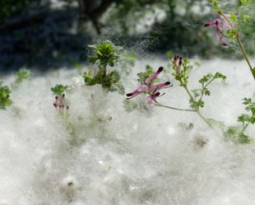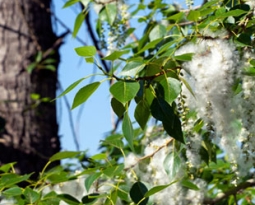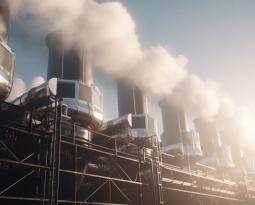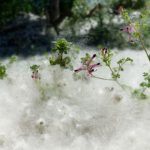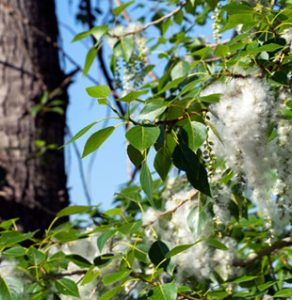 Many companies flock to rural communities to escape the hustle and bustle of city life. The larger space and lower costs are attractive to manufacturers who want to maximize their square footage. These facilities also play a huge role in the rural economy, offering a greater share of both nonfarm rural jobs and rural earnings compared to urban centers. While their charming nature might be pastoral and bucolic, rural areas grapple with even more air pollution challenges than city centers, including ones unique to them. In rural communities, the conversation about air quality often focuses on overt pollutants like smoke and smog. However, subtle contaminants, including organic particulates like cottonwood seedlings, pollen and agricultural dust can also play a major role in affecting manufacturing facilities and factories. While nearly half of the U.S. population breathes polluted air, proper air filtration is critical to the success and well-being of employees, equipment and the rural economy as a whole.
Many companies flock to rural communities to escape the hustle and bustle of city life. The larger space and lower costs are attractive to manufacturers who want to maximize their square footage. These facilities also play a huge role in the rural economy, offering a greater share of both nonfarm rural jobs and rural earnings compared to urban centers. While their charming nature might be pastoral and bucolic, rural areas grapple with even more air pollution challenges than city centers, including ones unique to them. In rural communities, the conversation about air quality often focuses on overt pollutants like smoke and smog. However, subtle contaminants, including organic particulates like cottonwood seedlings, pollen and agricultural dust can also play a major role in affecting manufacturing facilities and factories. While nearly half of the U.S. population breathes polluted air, proper air filtration is critical to the success and well-being of employees, equipment and the rural economy as a whole.
Rural VOCs
Agricultural operations release considerable amounts of volatile organic compounds (VOCs) into the air through pesticides, chemical fertilizers and heavy machinery. These VOCs react with nitrogen oxides in the atmosphere, combine with sunlight and create ozone gas, a primary component of ground-level smog. This formation not only increases particulate matter in the air but also has broader implications for environmental health and safety, especially when that air funnels back into HVAC systems.
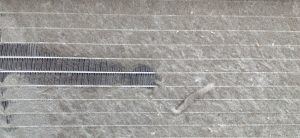 The Impact of Cottonwood Seeds on HVAC
The Impact of Cottonwood Seeds on HVAC
While HVAC units are filtering out dangerous particulate matter from their ducts, the seedlings from cottonwood trees can also create a major hazard. Those seedlings can fly through the air in the millions, easily clog filters and cooling fins and significantly reduce airflow. This inefficiency is not just a mechanical problem—it has direct implications for the air quality inside these factories and facilities, which can significantly impact worker health and productivity. With thousands of cottonwood seedlings coming in all at once, the results can be catastrophic for facilities with critical equipment and personnel.
Reduced Air Quality: As HVAC systems become clogged with cottonwood, their ability to filter out other pollutants, like dust, pollen and industrial particulates is reduced. The reduction in filtering capacity leads to an increase in air pollutants. Workers exposed to poor air quality over time may experience exacerbated respiratory issues, flare-ups and allergies, and other health problems such as headaches and fatigue.
Increase in Humidity and Temperature: Blocked airflow can cause a lack of precise humidity and temperature regulation, leading to production inefficiencies and potential equipment malfunctions.
Higher Costs and Consumption: When HVAC systems are forced to work harder due to blockages from cottonwood and other debris, they often consume more energy. This can lead to more resources having to go into maintenance, cleaning, repairs and replacements.
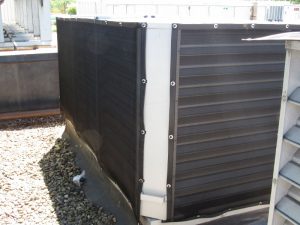 Combating Cottonwood with PreVent Prefilters
Combating Cottonwood with PreVent Prefilters
Designed to outperform traditional mesh filters, PreVent® can effectively capture cottonwood fluff and other particulates with its smooth fiber fabric. PreVent’s intentional design gives it low airflow resistance and high debris-holding capacity and can significantly reduce HVAC maintenance costs. We provide different mounting options to protect your systems from agricultural dust and industrial pollutants. No matter the pollution, PreVent air intake screens keeps your facilities clean and HVAC units running efficiently.
Invest in Clean Air
Despite being far removed from the hustle and bustle, rural facilities are far from immune to airborne pollutants. Investing in high-quality air filters like PreVent is not just beneficial to any rural facility—it’s crucial to keeping your facilities and employees safe from VOCs and harmful pollutants.
Contact us to learn more.
